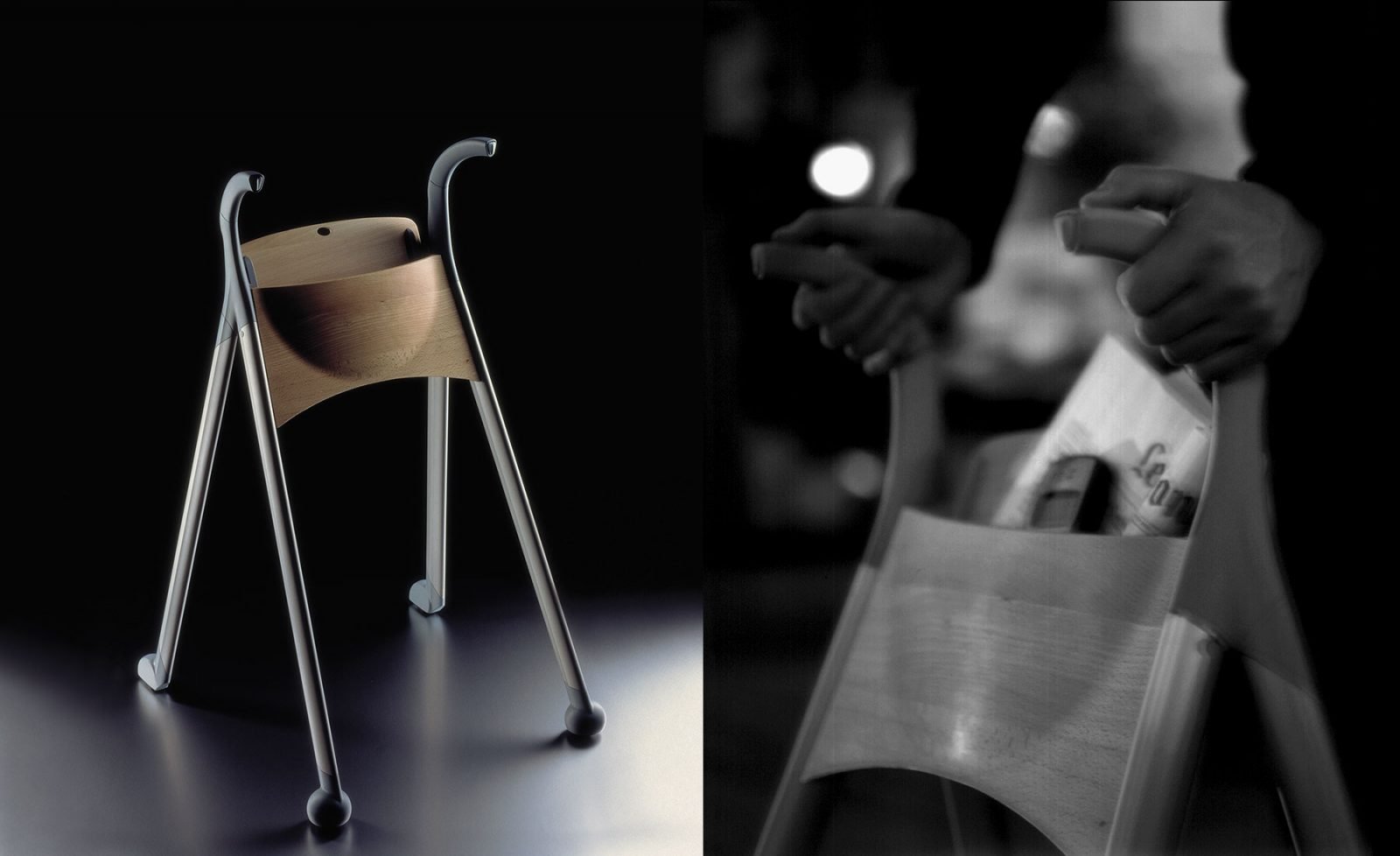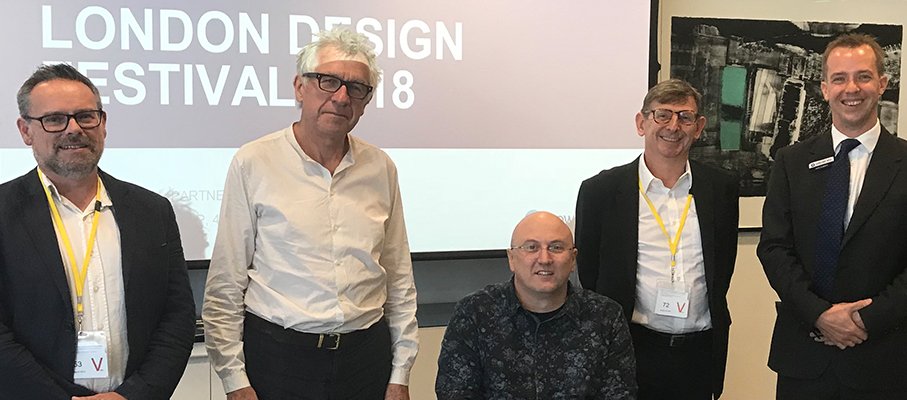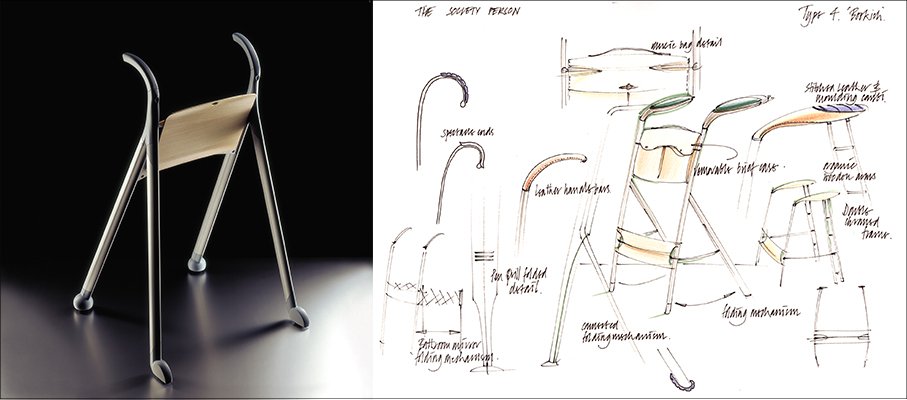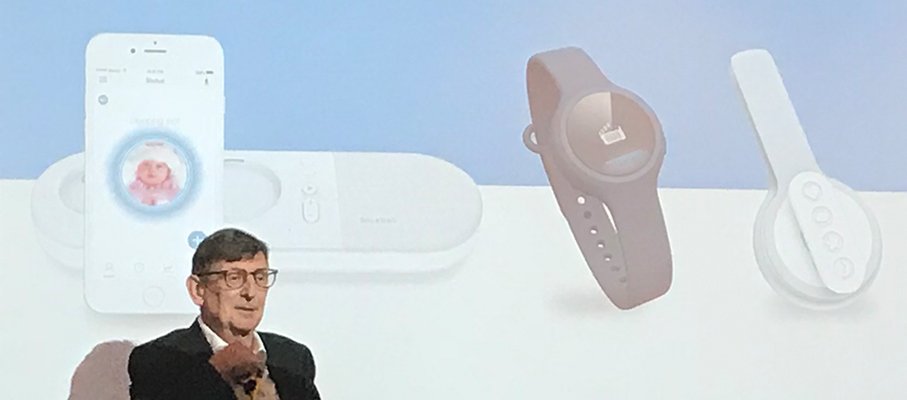Design for all in a multigenerational world


Matt Dyson, Johnny Grey, Adam Thomas, Martin Darbyshire and John Coldham.
A panel of leading British designers has urged the industry to realise the social and economic imperative of designing for all, as the need for accessible design evolves into multigenerational design.
Speaking at a London Design Festival event on Monday 17th September in front of an invited audience, Martin Darbyshire (tangerine), Johnny Grey (Johnny Grey studios), Adam Thomas (Thomas Consultancy) and Matt Dyson (Rockit) spoke about their experiences of designing across generations.
“Multigenerational design is just accessible design by another name”, explained Adam Thomas, Britain’s first and only accessible kitchen designer and wheelchair user. “I spent years trying to get people to understand the importance of accessible design; now that we’re talking about multigenerational design many organisations are finally taking note”.
As a wheelchair user from a young age, Adam has personal experience of how poorly designed facilities can make completing even basic daily tasks incredibly difficult. During his talk, Adam showed examples of award-winning kitchens that were supposedly optimised for wheelchair users and yet had glaring safety and accessibility problems, such as sinks with wheelchair accessibility next to rather than below them.
“It’s a basic human right to ensure that housing stock is available and appropriately designed for all people”, Thomas explained.
In the UK, 50% of the Grey market have a form of disability and a spending power of £320 billion, according to academic and kitchen designer, Johnny Grey. Demonstrating the economic as well as the social imperative of designing for all.
Johnny identified the wider social problem of poor design and suggested Multigenerational design could empower the individual to bring independence that they would not otherwise have. “Elderly and disabled people often get put into care homes once they can no longer cook for themselves, but if we design kitchens to empower individuals, it could decrease the cost of social care to the UK government”. Johnny is responsible for a “soft rebellion” in kitchen design, designing ergonomic modular units to create appropriate social spaces for all users.
Recently, Johnny has begun working with the National Innovation Centre for Ageing (NICA) on the ‘4G kitchen’ that accommodates for a multigenerational home in the digital age and as a lecturer at Bucks New University, highlighted the importance of encouraging multigenerational design as a design principle in the education of future designers.
Martin Darbyshire, CEO of tangerine, discussed the commercial viability of multigenerational design saying that one of the problems is that organisations and governments base decisions on short-term budgets rather than long-term investments. He used the example of the ACTIV Walking Frame, a project that tangerine conducted with Central Saint Martins Art School to examine how design can be used to change perceptions around ageing and disability.
In 1996, it was estimated that a third of prescribed Zimmer frames went unused; a sad waste for a stretched NHS. tangerine was asked to create a better design aimed at what people actually wanted, to make a desirable product rather than a utilitarian, medicinal object.
“A better design and a better understanding of the users lead to the development of a better user experience,” says Darbyshire, “we created a new ‘ACTIV’ Walking Frame, which emphasised the benefit of improved mobility to a happy lifestyle rather than a medical necessity”.

ACTIV Walking Frame, the final concept and development.
“It looked classy and sleek, not at all like industrial-looking Zimmer frames”, commented Dame Anne Begg CBE at its launch in 1996. “The frame passed the real test of whether a disability aid is a good design or not – someone without a disability said, ‘I wish I had one’”. Begg was the first permanent wheelchair user in the House of Common.
From past to present, Martin then unveiled tangerine’s recent project with start-up company Bluebell, a parent-baby family of devices aims to make parenting simpler. The smart monitoring system is designed to help parents to take back control of their routine and their babies so that they can improve their own sleep patterns and welfare.
The system is carefully designed to be used by multiple users, from parents to great-grandparents and other care providers, such as nannies. As the product is intended for multi-users, the devices are designed to be easily understandable and intuitive to use. The panel of speakers also discussed how they thought the monitoring system could have further applications in the future, potentially helping families of those living with Dementia.

Martin introduces tangerine’s latest project with start-up Bluebell, a smart monitoring system for parents and their babies
Matt Dyson, Co-Founder of Rockit portable baby rocker, described the difficulties of designing for multiple generations, “You have to go against your own intuition as a designer. We went through a design process of continually stripping back so that by the end we only had two buttons”. Through removing the superfluous, the final design was easier to use and more intuitive for first-time users.
“The mantra became, test, test, test”, explains Dyson, “so we conducted several focus groups and found that what they wanted was something simpler”. Rockit was a successful winner of the Design Council’s Spark programme, an innovation platform that helps entrepreneurs to product launch ideas and kick-start their business through advice and a cash injection of £20,000.
International law firm Gowling WLG hosted the event at their offices on the Thames. John Coldham, an Intellectual Property expert and partner at Gowling WLG, who chaired the discussion, acknowledged the importance of solving the issues of an ageing society, referencing its inclusion in the UK Government’s Industrial Strategy.
“The designers who best adapt to meet the shifting consumer habits of a multigenerational world and create innovative solutions that meet the needs of different age groups will enjoy greater success. But, with increased success comes increased copying, therefore designers should seek help from specialists to get information on design rights and practical advice on how they can best protect their IP”, concluded Coldham.